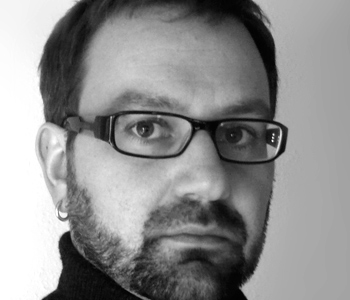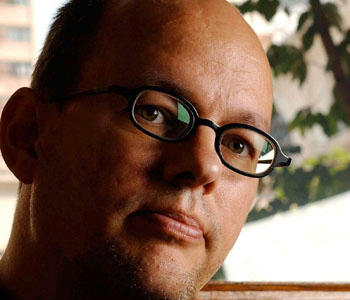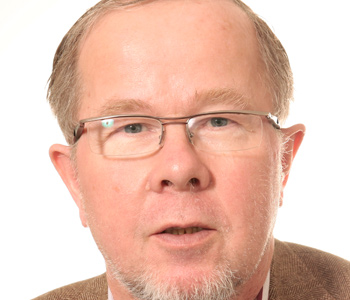Carolyn J. Dean
Aversion and Erasure: The Fate of the Victim after the Holocaust
Cornell University Press
200 pages, 9 x 6 inches
ISBN 978 0801449444
This book is about how the idea that the Holocaust of European Jews represents the most radical evil of our time shapes discussions of victims in general.
The book shows how the Holocaust transformed our whole way of thinking about war and heroism. War is no longer a proving ground for heroism in the same way it used to be. Instead, war now is something that we must avoid at all costs—because genocides often take place under the cover of war. We are no longer all potential soldiers (though we are that too), but we are all potential victims of the traumas war creates. This, at least, is one important development in the way Western populations envision war, even if it does not always predominate in the thinking of our political leaders.
During the 1970s and after, the Holocaust became a central reference point in the West for imagining inhumanity. This book seeks to understand how this development led us to imagine other kinds of brutality. For example, the Bosnian war was depicted as if it were “like” the Holocaust of European Jews.
I also try to understand how the attention given the Holocaust generated the idea that we live in a culture in which all minority groups want to be “victims” who have suffered their own Holocaust—as well as the use of the notion of “survivor” to describe victims, including those who have suffered domestic violence and those who have lived through the most extreme traumas of war and ethnic cleansing.
Most importantly, the book asks how we really see victims and how this discussion about the Holocaust and its impact shapes our decisions about who is really a victim and who is not.

A focus on victims helps us to discuss things that are uncomfortable and yet central to our self-image: how do we really feel about those who suffer? Do they always evoke our sympathy? Why or why not?
I was interested in all the talk in the media and in scholarly journals about how the Holocaust received “too much” attention and led us to ignore the plight of others, such as Palestinians, Rwandans, and even those victimized by Stalin.
During the 1980s and 90s lots of books appeared in the US and Europe that declared that Jews had stolen the spotlight from other groups who had suffered or were suffering.
I thought this was very peculiar, but you couldn’t just attribute it to anti-Semitism—it was true that a museum had been erected on the mall in Washington, D.C. to teach us about the Holocaust before any memorial had been erected to ask us to remember slavery.
Moreover, the State of Israel had used the Holocaust for political purposes, which, while not surprising, for all states use history to political ends, gave some credence to the view that the status of the Holocaust as radical evil might short-circuit other discussions about discrimination within Israel itself.
In short, I wanted to use the constantly invoked role of the Holocaust as the image of radical evil to understand this widespread interpretation of Jews as having taken pride of place in a pantheon of victims. How should we understand these discussions, which, after all, are absolutely central not only to the way we think about which victims to remember and memorialize, but to our image of ourselves as protectors of global human rights?
Can any of these discussions be attributed to anti-Semitism? If so, I thought, we can demonstrate how anti-Semitism is still with us in a new guise. And more, by understanding the landscape in which some victims are remembered and others ignored, we can understand how we envision some victims as more credible than others, and even more admirable than others.
This seems to be a crucial set of questions to seek to answer, however tentatively, given the increasingly bloody history of the new century, new debates about war, the rise of Islamophobia, the use of suicide bombers, and so on. A focus on victims helps us to discuss things that are uncomfortable and yet central to our self-image: how do we really feel about those who suffer? Do they always evoke our sympathy? Why or why not? How do those attitudes translate into political and cultural views and policies?
I had already written a book about understanding the ways in which our empathy fails when confronted with images and narratives about suffering. Focusing on the Holocaust and on how many critics claimed that depicting the suffering of victims was “pornographic,” among other themes, I had sought to understand the use of the word pornography to describe suffering. The word was always used but had never been examined. For example, the late Susan Sontag used it to discuss the photographs of Abu Ghraib in an article in the New York Times Magazine on that subject in 2004.
I had alluded to the way in which many writers and journalists hated the way they claimed our society focused on victims, but that wasn’t my focus in the book. In Aversion and Erasure, I go back to this question—not how to understand debates about images and stories of political violence, but to understand why Western culture is denounced as one that celebrates victims.
One claim I make in different ways in the book—and very explicitly in chapter 3—is that to be really credible, a victim has to appear to have mastered his or her suffering.
There is a style that is most appreciated and recognized for telling stories of suffering—I call it “minimalism” after an art form with the same name. What I want to convey is that victims who seem dignified and clear-eyed are those that we are most likely to believe.
This may seem self-evident: after all, aren’t those people reasonable and capable of conveying their experience in a way we can all understand? The Holocaust survivor Primo Levi was always celebrated because of his measured approach to his own experience in Auschwitz, while other writers as good as Levi did not receive the same kind of attention.
There are other reasons for this: the most popular memoirs of the Holocaust were initially by writers who were not Jewish or who were from Western Europe, like Levi. The Jewish experience, as someone put it, wasn’t as “marketable” because it was so far from what anyone could imagine.
All of this is true, and of course, by now a variety of memoirs has been published, many of them by Jews and East Europeans. But there is still a bias, I argue, toward understatement in those memoirs we deem most truthful.
I argue that this is partly because there is a move afoot to take the Holocaust off of its pedestal as a kind of sacred event. A good move, I think: giving the Holocaust sacred status denies that it was first and foremost a historical event.
But it is also true because fragile, powerless, and helpless victims make us uncomfortable, evoke complicated responses in us, and make it hard for us to empathize with the humiliation they underwent.
Indeed, that is why, to go back to my earlier comments, so many journalists denounced photography of political violence as demeaning to victims because it showed them in all of their helplessness.
And as I discuss later on in the book, these attitudes account for all the debate about the so-called passivity of Jews in the Holocaust and the aversion toward those who did not resist. Remember that Jews were said to have gone like sheep to the slaughter? Right after the war even Israelis expressed shame about Holocaust survivors because they allegedly did not for the most part fight back. Though that debate is over, I would argue that the attitudes underlying it persist.
I hope that the reader will take away from the book some sense of how he or she responds to victim’s narratives, and how this is impacted by culture.

Fragile, powerless, and helpless victims make us uncomfortable, evoke complicated responses in us, and make it hard for us to empathize with the humiliation they underwent.
The book is about how we judge victims in an era of unending violence and increased attention to global human rights. It shows that attitudes toward victims have a history, and that views about victims have changed over time and are deeply rooted in cultural norms about suffering as well as dignity.
What does it mean that we find victims who suffer with dignity more attractive than victims who don’t? What does it mean that we don’t mind it when perpetrators, torn apart by their own experiences, weep openly—but we are rendered uncomfortable when victims do the same?
I don’t mean that each and every person has this experience: many of us feel like weeping when we see the carnage created by a suicide bombing and the grieving and shocked faces of the survivors. I mean instead that in all I have read, I detect a strong cultural bias toward aversion when confronted with victims who act as if they have suffered.
We want our victims to be reasonable or very distant. We don’t want vengeful, angry, emotionally stunted victims unable to overcome some of their experiences. We know, for example, how long it has taken the US military to recognize the psychological suffering imposed on men and women in war.
I think it is very important to explore these biases as we challenge ourselves to help those who suffer, including those in our midst. Why is it that we don’t always want to see suffering, and what are the biases that allow us to turn away?
In order to answer these questions, I felt that I had to establish that we did often turn away, that we turned away not simply because we were weary of media images (though that is part of it too). I felt that I had to understand how attitudes toward victims were shaped historically and how interpretations of the Holocaust of European Jewry were central to shaping those attitudes.




We don't put paywalls. We don't distract you with ads. We don't sell your data.
Please help to keep this running!